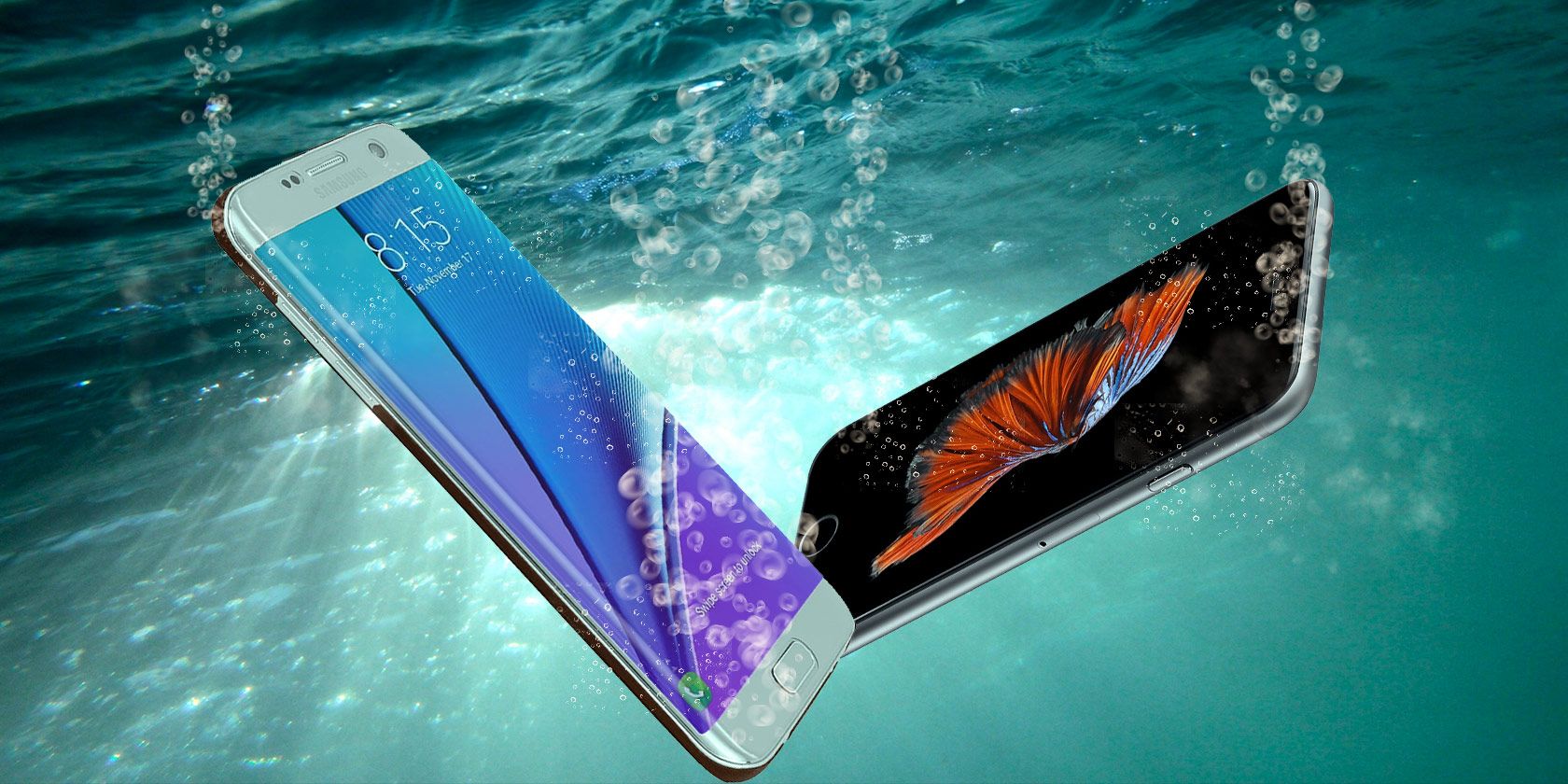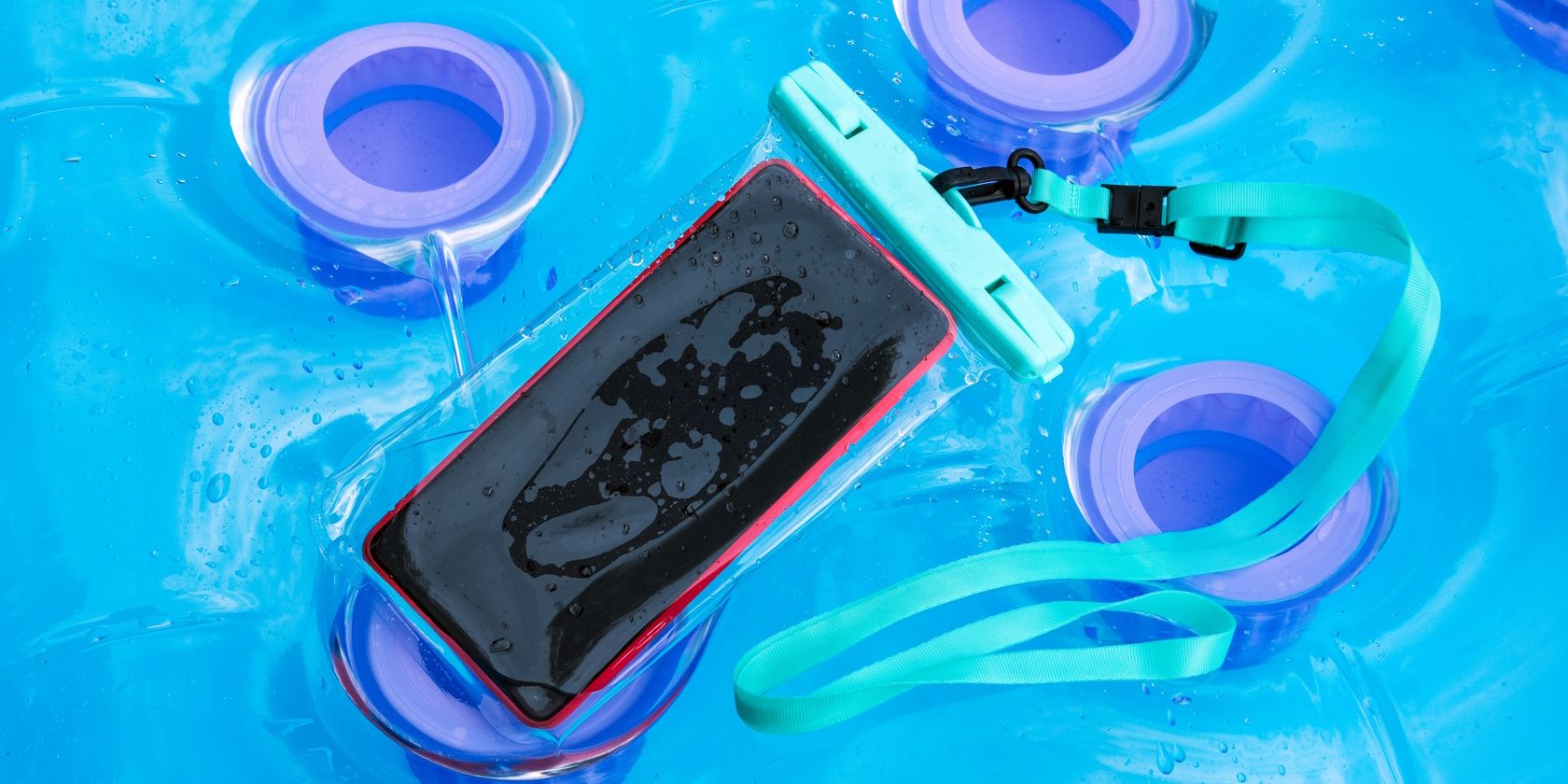Quick Links
Key Takeaways
- Water-resistant devices are not completely waterproof, meaning water can still enter under certain conditions.
- Smartwatches and fitness bands use the ATM value to indicate water resistance, while smartphones use the IP codes.
- Water resistance is not a permanent trait and can degrade over time, so treat water resistance as a safety net, not a feature.
Many devices are touted as water-resistant or even waterproof. But what does this mean—can you throw your phone into a pool without worry? Let's examine water resistance more closely to avoid water damaging your phone, smartwatch, or other device.
Waterproof vs. Water-Resistant
Waterproof means that it is impossible for water to ever get inside a device under any circumstances. But while some companies use this as a marketing term, no device is truly waterproof.
Even if your device can withstand a few minutes in the rain or being dropped in a shallow pool, you can't take it deep-sea diving. At some point, all water-repelling measures will fail, and water will enter the device.
This is why water-resistant is the more accurate term. It indicates that while the device has some protection against liquid intrusion, water can still get inside under certain conditions—a subtle but important difference.
So you know your device isn't completely waterproof, but how do you figure out how much water it can withstand? This is where standards that indicate how a device will protect against water come in.
ATM Resistance: Used Mostly for Wearables
ATM, or standard atmosphere, is a unit of measure for pressure. One atmosphere is roughly equal to the pressure exerted on an object when it's on the surface of the water at sea level. Every 10 meters (~33 feet) deeper you go increases the pressure by one additional ATM.
Smartwatches and fitness bands usually mark their water resistance with an ATM value. For example, if your smartwatch has a water resistance of 5 ATM, it's probably safe to use in recreational pools and will survive being left out in the rain.
There is no standardized test to determine the ATM of a wearable device, though some watches adopt the ISO:22810 standard used by traditional wristwatches. While the ATM of a wearable device marks its water resistance, there's more to it than just the depth.
ATM tests are done under static pressure, meaning that they test the device sitting still at a certain level of pressure. This is quite different than many real-world conditions. For example, while your fitness tracker might withstand being dropped in a sink full of water, it could be destroyed if you spray it with a strong hose or slam into the water while jet-skiing.
These situations may exert more pressure on your watch than it can handle, so it's important to consider the power of the water and not just the depth.
IP Codes: Used Mostly for Phones
Unlike wearables, smartphones have standardized tests for water resistance. These are set by the International Electrotechnical Commission (IEC) and are called International Protection (or Ingress Protection) codes. The codes are commonly denoted as IP, followed by two digits.
For example, the iPhone 15 has a rating of IP68. In those two numbers, the first digit refers to dust protection. For this, 6 is the highest rating, which most of today's smartphones achieve. The second digit refers to water protection, in which 9 is the highest rating. However, most smartphones offer a 7 or 8 level of water resistance.
Here's a quick list of what each water resistance number indicates:
- X: The device has not been tested for water resistance.
- 0: No protection against water.
- 1: Dripping water has no effect.
- 2: Dripping water has no effect even when falling vertically when the device is at a 15-degree angle.
- 3: Spraying water has no effect, even when coming at an angle of 60 degrees from vertical.
- 4: Splashing water from any direction has no effect.
- 5: Water jets from a 0.25-inch nozzle have no effect.
- 6: More powerful water jets from a 0.5-inch nozzle have no effect.
- 7: Submerging in up to one meter (3.25 feet) of water for 30 minutes has no effect.
- 8: Submerging in more than one meter (3.25 feet) of water for more than 30 minutes has no effect.
- 9: High-temperature, high-pressure water sprays have no effect.
You're not likely to encounter the last level for consumer electronics. Most smartphones today offer 7 or 8 water protection, while older devices might have 4, 5, or 6.
Technically, just because a device has achieved one resistance level doesn't mean it's been tested for the other numbers below it. Some devices will thus boast two IP ratings, but this is rare. Generally, any device rated as a 7 or 8 for water protection will also be safe against weaker forms of water intrusion.
Depending on the device, a water resistance rating of 8 can have a different meaning. For example, the iPhone 15 and iPhone 11 are both rated at IP68. However, according to Apple's iPhone water resistance page, the iPhone 15 is rated for protection at six meters (19.7 feet) deep for up to 30 minutes, while the iPhone 11 is only rated for depths of two meters (6.6 feet) at 30 minutes.
In short, IPx7 and IPx8 ratings indicate that a phone can survive submersion in water. As mentioned with ATM ratings, remember that these rating tests are done in still water under perfect conditions. Just because your phone can safely sit in a few feet of water doesn't mean you can spray it with a pressure washer.
The Limitations of Water Resistance
As we've seen, any device the manufacturer claims is "waterproof" is water-resistant to some degree. Devices are tested under precise conditions to determine their level of protection, but those are not perfect and come with limitations.
Importantly, water resistance is not a permanent trait. Over time—either through normal wear and tear or through damage—your phone's water resistance can drop. Seals can degrade over time, and a drop or smash can give water an entry point to your device's internals it wouldn't have otherwise.
Because of this, water damage is not covered under most phone warranties. If you drop your phone in water a few months after buying it, and it stops working, the company isn't likely to replace it.
Depending on your device, you may be unable to press its buttons while submerged. In some cases, doing so can break seals and allow water to enter. If you use a water-resistant case for your phone, make sure you have all the flaps and other covers secured, too.
Keep in mind that water protection tests are performed in freshwater only. You shouldn't take your device into salt water under any conditions, as the salt can damage it beyond repair.
Finally, IP resistance doesn't necessarily protect against other liquids like coffee or muddy water. For the iPhone XS line and later, Apple states that the devices are resistant to spills from drinks like soda and juice. You simply need to rinse the spill with tap water, wipe your iPhone off, and let it dry.
For other devices, you should check with the manufacturer on the recommended procedure.
Water Resistance Is for Protection, Not Fun
It's important to remember that water resistance features are designed as a backup level of protection from water damage, not as a cool feature that you should put to the test. You probably don't have to worry if you accidentally drop a water-resistant phone in the toilet. But you shouldn't take your device into the pool every chance you get—it's not intended for use as an underwater camera.
If you want to know how water-resistant your device truly is, read the manufacturer's fine print. Don't trust marketing statements like "swim-proof," and apply skepticism to claims about devices made by no-name companies. To avoid a problem, you should never intentionally expose a device to water unless you're certain about what it's meant to handle.
If your phone gets wet, you may be able to reduce the water damage to your device if you act wisely and quickly.


